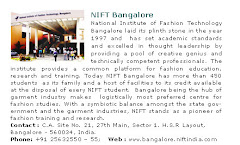Today we talk about Indian Textiles and in that series comes the town of Kancheepuram. This town is also known as Silk City since the main profession of the people is weaving silk sarees. The silk weavers of Kanchi settled more than 400 years ago and have given it an enviable reputation as the producer of the best silk sarees in the country.
Its economy is entirely dependent on tourism and the well-established handloom industry. Kancheepuram has thousands of handlooms and skilled weavers that make its silk sarees one of the best in the entire world. About 75% of the city's population are associated with the handloom industry in some way.
Did you know that the Kanchipuram Silk Saree is hand-woven with dyed silk yarn with interleaved designs made with 'Zari' - a Silk thread twisted with a thin Silver wire and then gilded with pure Gold. The FN team found out that the Kanchi silk thread used for weaving Kanchipuram Sarees is made up of three single threads twisted together.Woven from pure mulberry silk and have an enviable reputation for texture, lustre, durability and finish. Hence, the Kanchipuram Silk Saree is usually stronger (and more expensive) than its counterparts from Arni, Dharmavaram, etc. However, the designs on the Saree itself are what brings it the fame. Given below are two pictures depicting the Kanchi Silk.

MYSORE is known for its silk. For over seven decades, Mysore silk, with its unique sheen and regal look, amazing drape, pure yarn and zari, has held its own among all other silk fabrics from India and abroad. Today, it is the Karnataka Silk Industries Corporation (KSIC) which holds aloft the State's supremacy in silk and silk products, from classy dress material, stoles, and furnishings to the most resplendent of saris.
Though the origins of the Mysore Silk Factory date back to 1912, organised production of fabric started only in 1932, after a small quantity of raw silk was tested in Switzerland for quality. Looms installed in the factory were also imported from Switzerland, and most of them have survived to this day.

In 1980, after it was handed over to the KSIC, the whole factory was modernised. The KSIC ensures that the raw silk goes through a complex production process, to meet the high quality standards expected of Mysore silk.That was a brief about 2 major silk hubs in India. Expect more about Indian textiles next week. Till then stay plugged on to FN
Sunday, February 3, 2008
A Peek into Indian Silk
Subscribe to:
Post Comments (Atom)








No comments:
Post a Comment